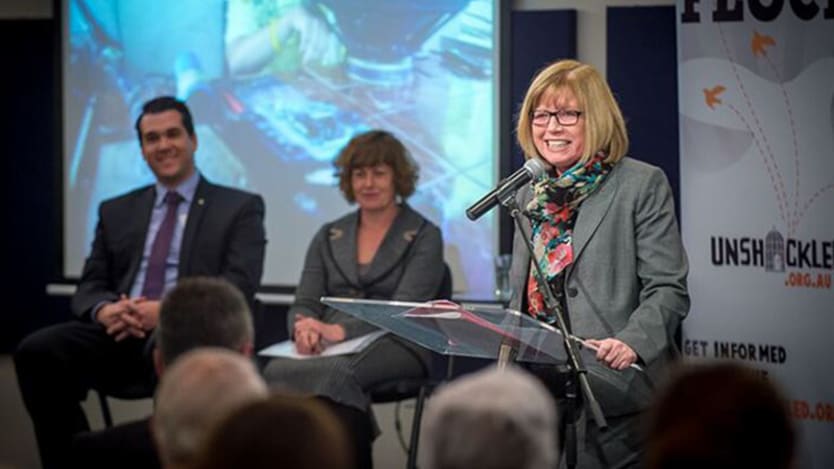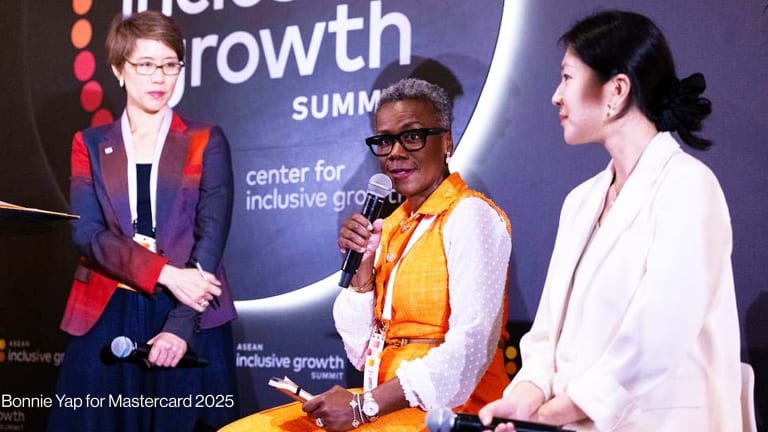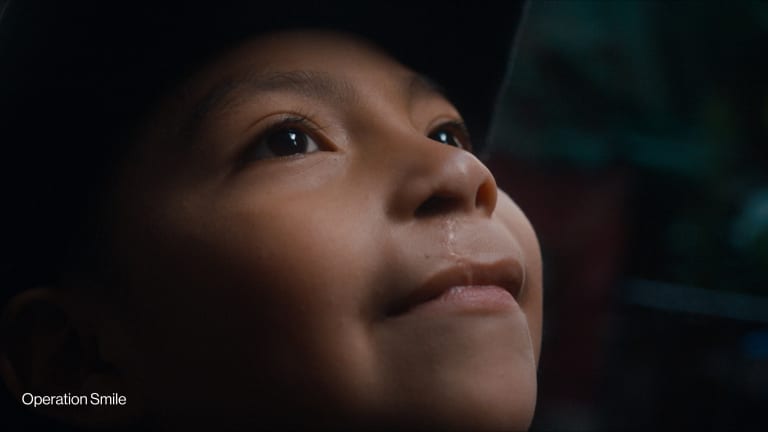
MELBOURNE, Australia — In her five years with CBM Australia, Chief Executive Officer Jane Edge has consistently heard the call for improved disaggregated data on people with a disability. After attending the recent Conference of State Parties to the Convention on the Rights of Persons with Disabilities, held in New York in June, Edge believes talk is finally turning to action.
“This can allow us to equip countries, through their censuses, to be able to count people with a disability — men, women, boys and girls,” Edge explained to Devex. “It was a tipping point in New York. I have heard it discussed elsewhere but now there is a sense of urgency. There was momentum from civil society and government. It was powerful to watch and see the right pressure to bare to bring about this change.”
Edge discussed with Devex how data can help put disability at the forefront of development.
Here is the interview, edited for length and clarity.
How visible are people with a disability in current data?
Anywhere in those low- and middle-income countries, where we have not had a way of capturing disaggregated disability data, there are huge barriers to visibility of people with a disability. Especially women.
We know that women with disability tell us about the discrimination and cultural barriers they face. But we have yet to consistently understand how many women with disability we are talking about, and in what countries.
See more related topics:
► Leading by example in disability-inclusive development
► Lessons from Burkina Faso's inclusive education system
We know that if you look at world disability reporting, 80 percent of people with disability globally tend to be in poor environments. But it is not clearly telling us where the need is, what the kind of need is and what needs to be put in place in terms of funds and accountability to have governments meet the needs and rights of people with disability.
But consider this — if people with disability were a country, they would be the third largest country in the world. To have the world’s largest minority still hidden away is a pretty significant hurdle for us. At the grassroots level, including CBM’s partners, organizations are working to screen and identify people with a disability but it’s not on the national or even provincial systematic level.
What are the current barriers to collecting data on people with disability in the development setting?
At the moment, we are still working in the dark to understand how many people with disability we are seeking to reach and how effective our programs are globally to ensure no one is left behind.
An agreement at the United Nations on what data tools to use is essentially what we are waiting for. There is a strong and consistent push for this to happen and once the framework is agreed, it can be can resolved. My understanding is that conversations are ongoing and progressing. The hope is that by the end of the year there might be some conclusion and guidance for those countries that are looking for a way to inform their statistics gathering.
Getting those various bodies to agree has been a journey, but it is getting close to its conclusion.
There are some countries such as Australia that have a well-advanced census position, and that would be the same for OECD countries. But I’m not sure at what level it is happening in lower-middle income countries. The challenge has been that without the consistency and instruction from the U.N. Statistical Division, there isn’t necessarily a prioritizing of data collection among all the other development challenges governments are dealing with.
The Millennium Development Goals had no mention of people with disabilities, so to be in a position where it is clearly articulated in the Sustainable Development Goals is a huge step forward. The challenge will be in ensuring we get the data to design programs well to include people with disabilities effectively, and report and hold governments accountable.
What support will be needed for low- to middle-income countries in implementing the U.N.’s data collection standard when it is approved?
I’m sure there will need to be a whole process around equipping people with disability to do that process well. And I guess that will be part of the information they issue in the guidance notes, hopefully released this year, that will enable the process to begin.
But I think it is fair to say that there will be training to ensure the best job possible is done. Given that we’re looking at Agenda 2030 and we are already two years in, if we can’t track this, the impact will be enormous.
Will it be perfect? Probably not in the first go. But it will be the start. And this is important, so we can live up to this idea of leaving no one behind.
You mentioned the 2030 deadline, which will approach rapidly. For you, what would be the key priorities to achieve to ensure people with disability have strong and sustained recognition and engagement within developing countries?
“By 2030, people with disabilities should be confident in their strengthened voice and place at the decision-making table.”
— Jane Edge, CEO at CBM AustraliaIt will be ensuring that we see the Convention on the Rights of Persons with Disabilities intersecting with the SDGs.
From the Australian perspective, we should build on the platform that already exists around disability inclusion. We should see our humanitarian action progresses. We should see our aid investment plans continue to strengthen in terms of including people with disability. And we need to be able to report on that.
By 2030, people with disabilities should be confident in their strengthened voice and place at the decision-making table.
These are things that we could seek to do over this period of time, but it will rest on the data. Without data, it will be difficulty to track and analyze the impact.
How can we ensure all disabilities are included in these discussions?
The way we go about it at CBM is to listen to each of the groups — understand the issues facing each of the communities, and working with them to provide that, as well as all of the other groups supporting disability out there.
Our work is really focused on working with these groups. Any influencing and capacity work CBM does with its partners — whether this is the Department of Foreign Affairs and Trade or another Australian NGO — we do it in partnership with a local organization of people with disabilites.
So it’s a matter of how you enable these people to be at the table, expressing their wants and accessing the right that the rest of us can take for granted. It is complex, and yes there are groups that are harder to reach than others. How we continue to create visibility, I think, is the challenge and opportunity before us.
We recognize physical impairment is an easy thing to understand as you can see it, but there are challenges when it is not so visible. For example, psychosocial disability. We need to bring these people into conversations and make things accessible to them.
What progress is being made in the Indo-Pacific region to support and give a voice to people with disabilities?
Depending on where you are working in the world, there is still a lot of work to be done to ensure people with a disability are brought into the conversation.
There are many places where civil society has been shrinking, making it difficult to create inroads into many countries. For CBM, we strongly support local partners and invest to grow and build capacity of a local NGO — they are in the best place to lead local dialog and we rely strongly on their perspectives.
And there are important achievements and milestones we can celebrate.
Only last year, Indonesia passed a law surrounding rights of people with a disability. And a young woman from Indonesia, Risnawati Utami or Risna, is an extraordinary advocate who will hopefully be elected to the Committee on the Rights of Persons with Disabilities.
Things like this are very significant. It shows that advocacy can bring structural change. And it gives a framework to talk about what rights look like.
It is a challenge, but seeing those wins happen and progression is a boost.
Read more international development news online, and subscribe to The Development Newswire to receive the latest from the world’s leading donors and decision-makers — emailed to you free every business day.








